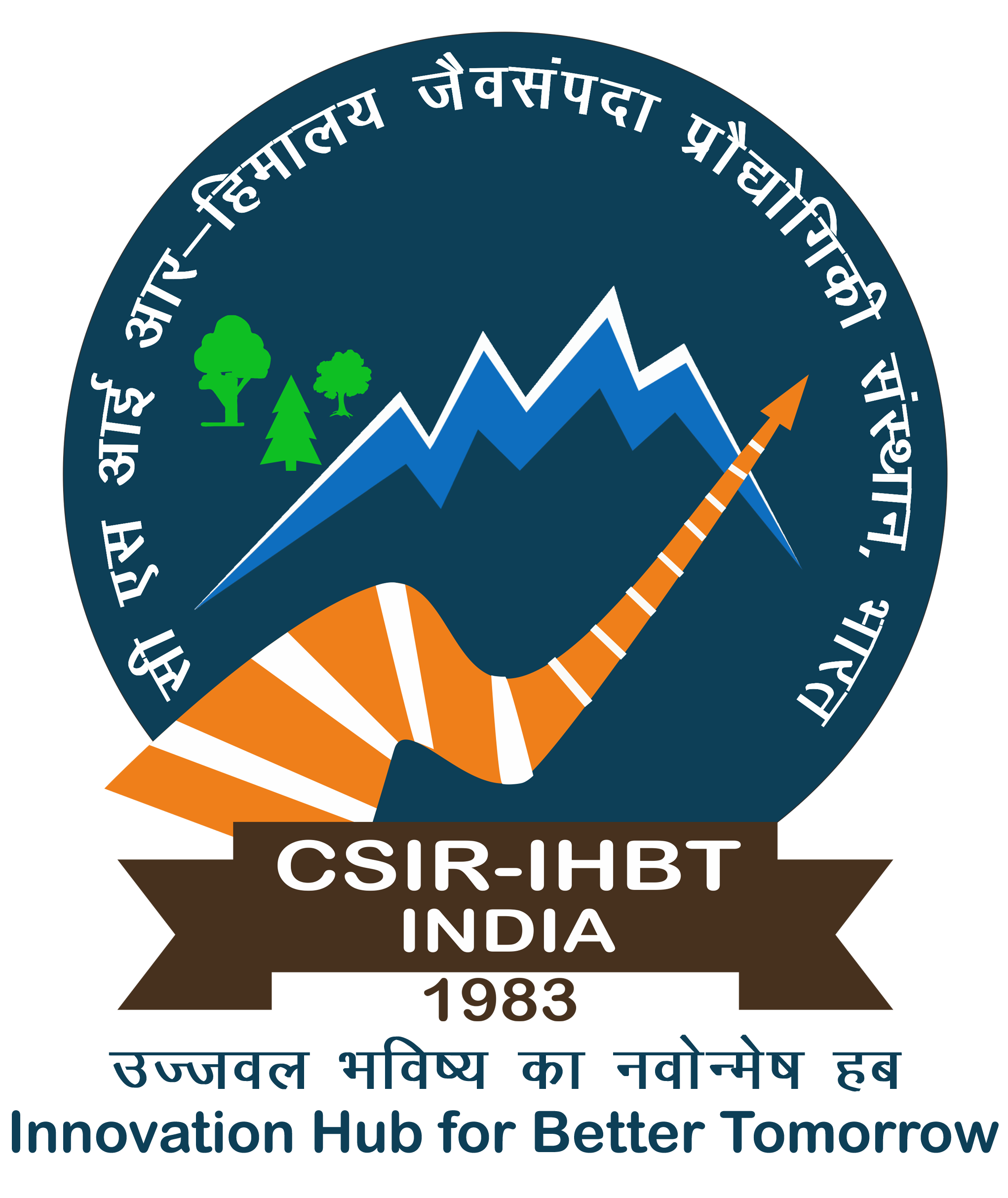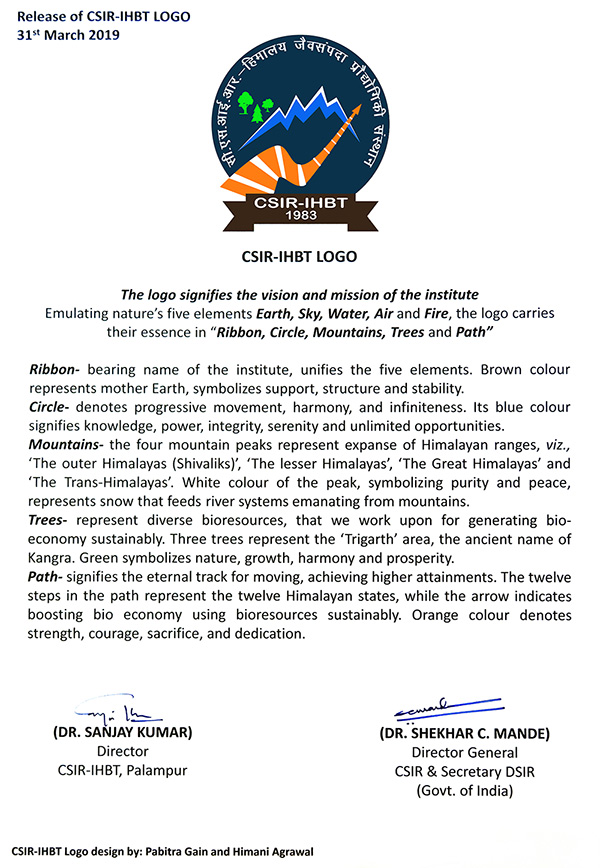CSIR Aroma Mission (Phase III)
Catalyzing rural empowerment and entrepreneurship development through cultivation, processing, value addition and marketing of aromatic plants
Objectives
- Development of sustainable models for cultivation of aroma crops
- Value addition and waste utilization
- Knowledge/technology generation and utilization
- Skilling, entrepreneurship development and market linkages
- Promotion of aroma crops for reducing import burdens or having great export potential
Deliverables
- Aroma villages/clusters following sustainable cultivation and processing technologies for the production of quality raw materials on a sustainable basis while protecting the ecosystem
- High-value molecules from deoiled herb; Safe essential oil-based products for human and veterinary use; High value aroma chemicals through transformations; Techniques of fractionation of essential oils for value addition
- Genomic resources data for important crops which could be exploited for developing improved genotypes/varieties; Molecular markers for authentication and identification of improved varieties; Library/database of pure reference materials of aroma molecules; Technologies for higher productivity with maximum resource use efficiency; Resource-efficient and climate resilient varieties
- Trained human resources skilled in aroma crops cultivation, processing and value addition; Entrepreneurs/start-ups in aroma sector
- Cultivation of crops providing higher benefits to the farmers; Reducing dependence of several essential oils from other countries and promoting exports of some; Increasing the area under cultivation of selected aromatic crops (CSIR-IHBT target is to extend cultivation over 1500 ha area)
CSIR Floriculture Mission (Phase II)
Objectives
- Enhancing farmers’ income and entrepreneurship development through high value floriculture utilizing CSIR technologies /li>
Deliverables
- Production of quality planting material (1.56 Cr)
- Expansion of area under floriculture (500 ha)
- Training programs to be organized (93 Nos.)
- Number of gardens in school and colleges (150 Nos.)
- Number of vertical gardens (30 Nos.)
- Development of post-harvest and value addition technologies (26 Nos.)
- Number of Pushp Krishi Mela/Workshop/training programme/skill development/Meets (15 Nos.)
CSIR-Phytopharmaceutical Mission - Phase III
Captive cultivation and mass production of quality planting materials (QPM) of selected medicinal plants.
Objectives
- Generation of large-scale quality planting materials (QPM) of targeted medicinal plant species
- Expansion of the area of targeted medicinal plant species under captive cultivation
Deliverables
- Availability of QPM in a sustainable manner
- Availability of authentic botanical raw drug (BRD) for the phytopharmaceutical industries
- Reduction of the import size of botanical raw drug
- An additional area of about 70 hectares will be brought under cultivation by the interventions of CSIR-IHBT
- Under this mission, about 10.7 lakh of quality planting materials and 75 kg seeds of targeted medicinal plants will be generated and distributed to the farmers/growers
- More than 200 farming families will be benefitted
CSIR Mission on Bioresource Conservation and Prospection (BioCAP)
Objectives
- Biodiversity characterization & resource mapping in the target areas
- Genetic characterization of selected/prioritized species
- Chemical characterization & value addition of selected/prioritized species
- Conservation, management and outreach
Deliverables
- Floras of unexplored regions
- Conspectus on Indian Coasts
- Barcodes for authentication
- Monographs on wild edible plants
- Microbial database & novel formulations
- Conservation protocols
- Value added products, processes & technologies
- Publications & Patents
- Human Resource Development
Smart Village Mission
The Smart Village Mission aims to drive sustainable development by transforming rural India through technological, social, and economic advancements.
Objectives
- Develop a risk and needs assessment framework for smart villages, addressing socio-economic and environmental factors.
- Deploy climate-responsive technologies to enhance sustainability, energy efficiency, and resilience in rural areas
- Foster a self-sustained ecosystem through collaborative participation of communities, technologists, and stakeholders
- Formulate a strategic roadmap for smart village development in the Indian context, addressing key challenges with innovative solutions
Deliverables
- Deployment of technologies such as smart grids, water and waste water management systems, rural electrification, and modern farming tools in selected villages.
- Development of infrastructure including roads, housing, and sanitation
- Creation of skill development programs and digital literacy training for rural populations
- Establishment of eco-friendly and self-sustaining village systems
- Continuous monitoring and evaluation of progress and outcomes
Specialty Chemicals for Industrial Applications
Objectives
- Identification of plant with maximum tannin content
- Development of an efficient lab-scale process for the tannin extraction from targeted plants
- Characterization of tannins using modern spectroscopic techniques
- Assessment of extracted tannins in the tanning process
- Pilot scale process for tannin extraction
Deliverables
- Institutional knowledge of plant resources that are rich in tannin
- Societal replacement of toxic chromium-based leather tanning process with environment-friendly tannin based tanning process
- Industrial process for tannin extraction from plant sources
Process for substituted cyclohexane-1-3-diones synthesis ((Fast Track Translational Project supported by CSIR)
Project Investigator- Dr. Pralay Das
The cyclohexane-1,3-dione derivatives are important intermediates for several bioactive molecules synthesis. The cyclohexane-1,3-dione is a basic unit present in triketones such as mesotrione having herbicidal activity. Due to high cost of cyclohexane-1,3-dions as a base material, the cost of final products of herbicides are very high and difficult for farmers to afford.
Through process innovation, CSIR-IHBT has developed a simple cost effective method for preparation of substituted cyclohexane-1-3-diones. Efforts are underway for its upscaled production. Apart from herbicides, this molecule has application as a potent drug against Tyrosinemia type-I metabolic disorder disease. Looking into the commercial implications a Patent has been filed for the invention.














